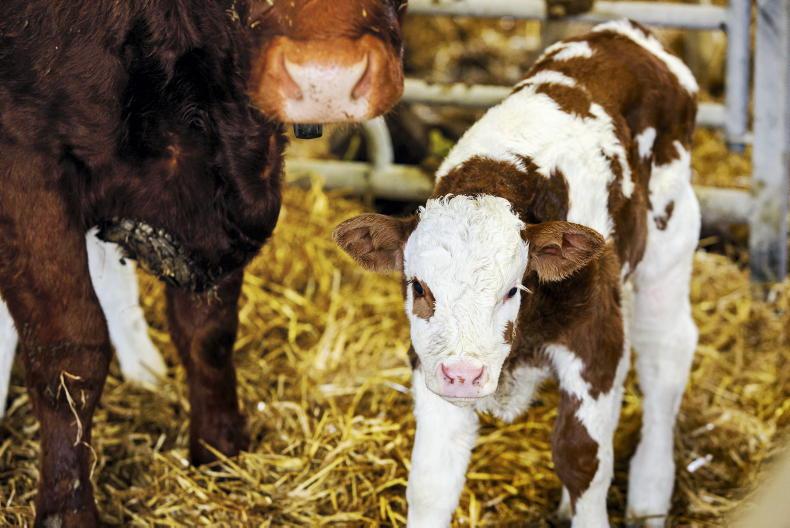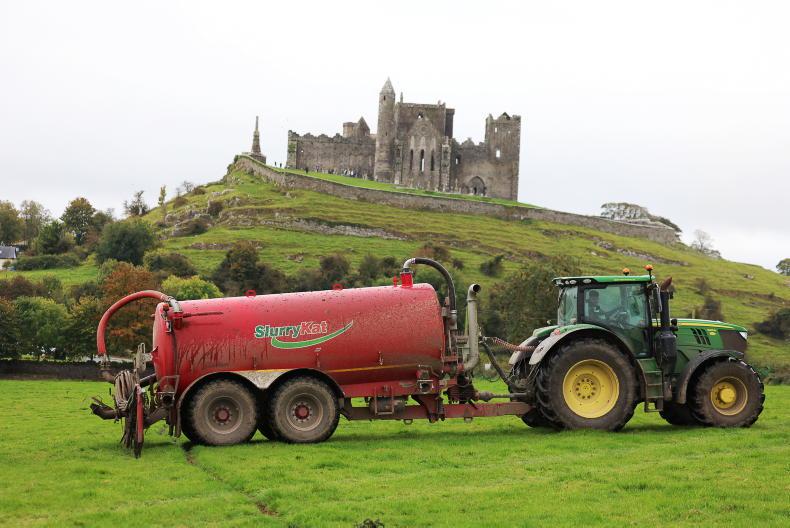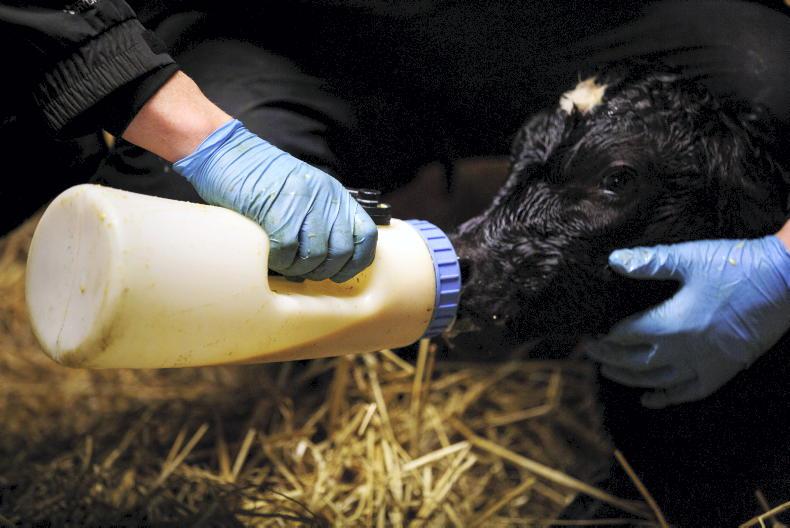Many farmers operating an autumn-calving suckler herd prefer to have cows calving down from August onwards.
Therefore, with autumn calving just over one month away, it is time to start planning ahead for the next crop of calves to hit the ground.
Outlined are some management tips to follow.
1. Dry cow minerals and grazing
Feeding pre-calving minerals in the run-up to calving is good practice, especially in herds where cows have high levels of milking ability. This safeguards against problems such as milk fever.
Pre-calving minerals can also lower the incidence of cows holding the placenta after calving and help improve calf vigour, meaning newborn animals are quicker to stand and feed unassisted.
This is a big advantage on farms where autumn cows calve outdoors.
2. Fly control
Summer mastitis is a major downside for autumn-calving herds and something that turns farmers off calving cows at this time of year.
There is no perfect method of preventing mastitis that fits every autumn-calving herd. The more common options include fly repellent pour-ons that are quick and easy to apply on a regular basis.
Garlic lick buckets and fly repellent ear tags are alternatives, but many farmers find a combination of two or three options work best.
Many farmers put dry cows to rougher grazing in the run-up to autumn calving.
Grass tends to be stronger and headed out on such blocks, which increases fly activity and the risk of mastitis. Therefore, top these swards if possible.
Also, keep dry cows away from heavily wooded areas and stagnant water courses.
3. Calving aids
Every farmer will have a cow calve down ahead of her time and this can often catch herd owners off guard.
Stock up on calving aids now and keep them in a convenient location for easy access. Replenish supplies of gloves, calving gel, iodine or a suitable naval dip, electrolytes, scour tablets, colostrum and stomach tube.
Check through the medicine cabinet and replace products such as penicillin used to combat infections post-calving or calcium to combat milk fever.
Locate the calving jack and ropes. Again, store where they can be easily located in an emergency.
If calving ropes are hard and frayed, replace with red and blue ones that can be allocated to a specific calf leg. Finally, re-order ear tags.
4. Calving at grass or indoors
Cows calving in August and September will be fit from grazing and should hopefully require less intervention at calving time.
These animals can be calved outside to cut down on bedding costs and time spent feeding. Keep cows close to paddocks beside the calving shed in case assistance is required.
Cows calved indoors allow farmers to have greater control and gives reassurance that assistance can be given when necessary.
Make sure calving pens are clean and once cows have calved, they should be slipped back outside to grass.
5. Building covers for grazing post-calving
Plan ahead to build grass covers or save silage aftermaths for autumn cows after calving, especially if there are no plans to buy or use fertiliser this summer.
High-quality grass will increase dry matter intake of energy and protein, driving milk production and bringing cows back into heat quickly.
Read more
Grain prices see €60/t drop in recent weeks
Thrive: weekend rainfall eases grazing pressure on demo farm
Many farmers operating an autumn-calving suckler herd prefer to have cows calving down from August onwards.
Therefore, with autumn calving just over one month away, it is time to start planning ahead for the next crop of calves to hit the ground.
Outlined are some management tips to follow.
1. Dry cow minerals and grazing
Feeding pre-calving minerals in the run-up to calving is good practice, especially in herds where cows have high levels of milking ability. This safeguards against problems such as milk fever.
Pre-calving minerals can also lower the incidence of cows holding the placenta after calving and help improve calf vigour, meaning newborn animals are quicker to stand and feed unassisted.
This is a big advantage on farms where autumn cows calve outdoors.
2. Fly control
Summer mastitis is a major downside for autumn-calving herds and something that turns farmers off calving cows at this time of year.
There is no perfect method of preventing mastitis that fits every autumn-calving herd. The more common options include fly repellent pour-ons that are quick and easy to apply on a regular basis.
Garlic lick buckets and fly repellent ear tags are alternatives, but many farmers find a combination of two or three options work best.
Many farmers put dry cows to rougher grazing in the run-up to autumn calving.
Grass tends to be stronger and headed out on such blocks, which increases fly activity and the risk of mastitis. Therefore, top these swards if possible.
Also, keep dry cows away from heavily wooded areas and stagnant water courses.
3. Calving aids
Every farmer will have a cow calve down ahead of her time and this can often catch herd owners off guard.
Stock up on calving aids now and keep them in a convenient location for easy access. Replenish supplies of gloves, calving gel, iodine or a suitable naval dip, electrolytes, scour tablets, colostrum and stomach tube.
Check through the medicine cabinet and replace products such as penicillin used to combat infections post-calving or calcium to combat milk fever.
Locate the calving jack and ropes. Again, store where they can be easily located in an emergency.
If calving ropes are hard and frayed, replace with red and blue ones that can be allocated to a specific calf leg. Finally, re-order ear tags.
4. Calving at grass or indoors
Cows calving in August and September will be fit from grazing and should hopefully require less intervention at calving time.
These animals can be calved outside to cut down on bedding costs and time spent feeding. Keep cows close to paddocks beside the calving shed in case assistance is required.
Cows calved indoors allow farmers to have greater control and gives reassurance that assistance can be given when necessary.
Make sure calving pens are clean and once cows have calved, they should be slipped back outside to grass.
5. Building covers for grazing post-calving
Plan ahead to build grass covers or save silage aftermaths for autumn cows after calving, especially if there are no plans to buy or use fertiliser this summer.
High-quality grass will increase dry matter intake of energy and protein, driving milk production and bringing cows back into heat quickly.
Read more
Grain prices see €60/t drop in recent weeks
Thrive: weekend rainfall eases grazing pressure on demo farm









SHARING OPTIONS